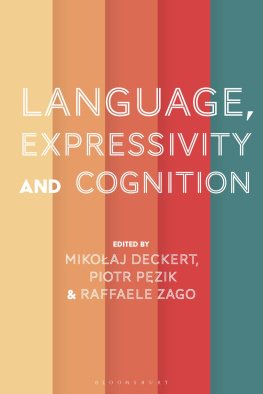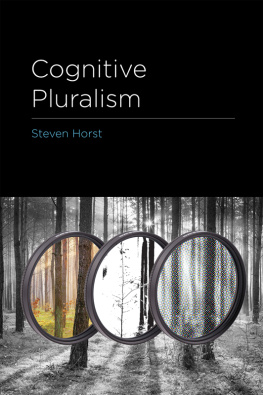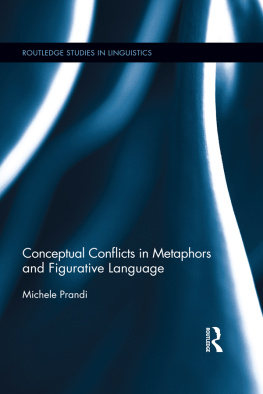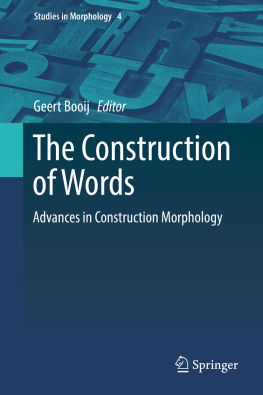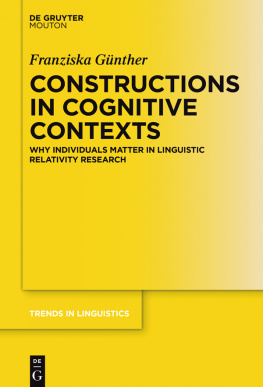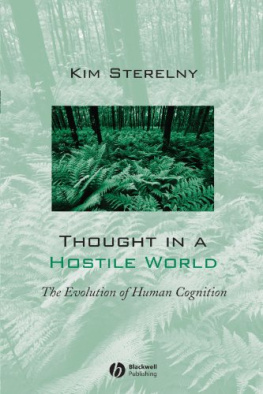

Figurative Meaning Construction in Thought and Language
Annalisa Baicchi
doi: 10.1075/ftl.9
ISBN: 978 90 272 6102 1 (ebook)
Cataloging-in-Publication Data available from Library of Congress:
LCCN 2020013898
2020 John Benjamins B.V.
No part of this book may be reproduced in any form, by print, photoprint, microfilm, or any other means, without written permission from the publisher.
John Benjamins Publishing Company https://benjamins.com
John Benjamins Publishing Company
Amsterdam/Philadelphia
Foreword and acknowledgements
This volume brings together a selection of cutting-edge research studies that were delivered at the 2nd International Symposium on Figurative Thought and Language (November 2015), including five of the plenary talks and seven selected papers from the symposium. The authors, coming from ten different countries, are representative of many angles of Cognitive Linguistics. I am confident that the twelve chapters in this volume will foster scholarly debate in the issues raised and offer further impetus for future research on this area. I hope the volume will attract the interest of linguists, whatever their scientific persuasion, in the interplay between language and thought.
My warmest thanks go to the authors for their enthusiasm and high-quality chapters. I gratefully acknowledge the constant support and fruitful advice of the editors-in chief of the series Figurative Thought and Language, Angeliki Athanasiadou and Herbert Colston: Their wisdom and experience have been a great asset to me. Special thanks go to Gnter Radden for his generous help during some steps of the editing process. My warm thanks go to Esther Roth and the publishing house John Benjamins for their efficient collaboration throughout the whole process.
Annalisa Baicchi
Genoa, April 2019
Figurativeness all the way down By way of introduction
Annalisa Baicchi University of Genoa
This volume showcases twelve chapters that profile current research on figurativeness as is explored from the Cognitive Linguistics perspective.
Figurativeness is not merely a device for the embellishment of communication as was seen until a few decades ago, but it is, first and foremost, the pivot around which our thinking ability revolves. The opportunity is seized in this introduction to briefly take stock of how meaning is constructed in the mind of the language users, and to delineate how figurative language is the outcome of semantic information grounded in the action-perception system of the human brain, and embodied in our mind through the sensori-motor system that guides our interaction with the world.
Over the mid- and last-twentieth century two opposite approaches on the nature of meaning have permeated the scientific debate. They have brought to the fore the question whether meaning is outside the self waiting for a mind to grasp it and store it independent of human experience (Objectivist Realism), or it is the outcome of the language users experience (Embodied Realism).
The Objectivist Realism postulates the existence of a mind-independent reality and grounds its tenets on principles of subject-object separation. According to this school of thought, which has imbued the dominant philosophical and linguistic research from Aristotle to Chomsky, the world consists of entities that belong to objectively defined categories, where categories share logical relations that are unrelated with the human mind. Existence is separate from any aspect of human cognition, like perception, understanding, knowledge, or belief. The mind is a computational device that collects the data from human experience, dissects them mechanically, and stores them taxonomically in terms of primary semantic units. Thus, meaning is outside the self and the mind is a mere storage of human experience. Entities and categories of reality are expressed in thought and language through symbols whose meaning is represented by conventional correspondences. From this premise follows that language is an autonomous faculty distinct from any other type of knowledge, and it is the instrument to represent objective reality in symbolic form, with mental representations being necessarily either true or false. Figurative expressions are confined to the marginal province of Logic or disdained entirely because they are not verifiable and not representative of reality. Such expressions portrays a research hurdle for generativists, since they can not explain it within the framework of meaning conceived of as bundles of necessary and sufficient features: either the features are compatible, or they are not. Such an approach to meaning sees figurativeness as a violation of selection restriction, and as something that lies beyond the speakers competence as it flouts the established set of linguistic rules.
The Objectivist mathematics-fashioned perspective has been discarded since the 1980s when cognitive scientists ().
Figurative language is the outcome of our figurative thought, which derives from the ever-present interconnection between our physical experience and the relation we set up with the cultural context in which we live (, p.228). It is from this premise that cognitive linguists aim to achieve knowledge of figurative thought on the basis of an accurate analysis of systematic patterns of figurative language, a goal that they pursue through the identification of pre-conceptual and conceptual structures that are core pivots for the functioning of our mind. The chapters in this volume all pursue the goal of demonstrating how the figurative meanings expressed through linguistic patterns are a window onto our figurative thought.
Flanked by this brief introduction, the volume comprises of four parts: I. Figurativeness and Theory; II. Figurativeness and Constructions; III. Figurativeness, Pragmaticity and Multimodality; IV. Typology of Figures and Cognitive Models. Within each part, topically germane chapters are next to each other, and each of them focuses on different aspects of figurativeness addressed from the usage-based methodology of Cognitive Linguistics research.
Part I. Figurativeness and theory : Addition, identification and structure
In his chapter entitled Metaphor thoughtfully, John Barnden discusses the possibility of understanding discourse segments metaphorically even when they are not themselves couched metaphorically. Conceptual metaphor theory holds that metaphor involves forward transfer of information from the source domain of a metaphor schema to a target domain. This does not, however, preclude the possibility that information might also be transferred from target to source (). Barnden argues that reverse transfer may occur during online understanding, resulting in addition of metaphor. Psychological studies have already confirmed bidirectional transfer between metaphorical sources and targets. Barnden provides convincing examples of situations that might give rise to reverse transfer and addition of metaphor. He emphasises that reverse transfer effecting addition of metaphor is a possibility but is not predictable. This exacerbates the challenge of attesting metaphorical thought arising during occurrent understanding, but it should certainly not discourage cognitive scholars from exploring online processes such as metaphorical thought. Barndens notion of addition of metaphor opens up a fresh and attractive look at metaphor theory. It may also have consequences beyond metaphor. If metaphorical transfer turns out to be a bidirectional process, one of the distinguishing features of metaphor as opposed to metonymy is lost and their distinction becomes even more blurred.


